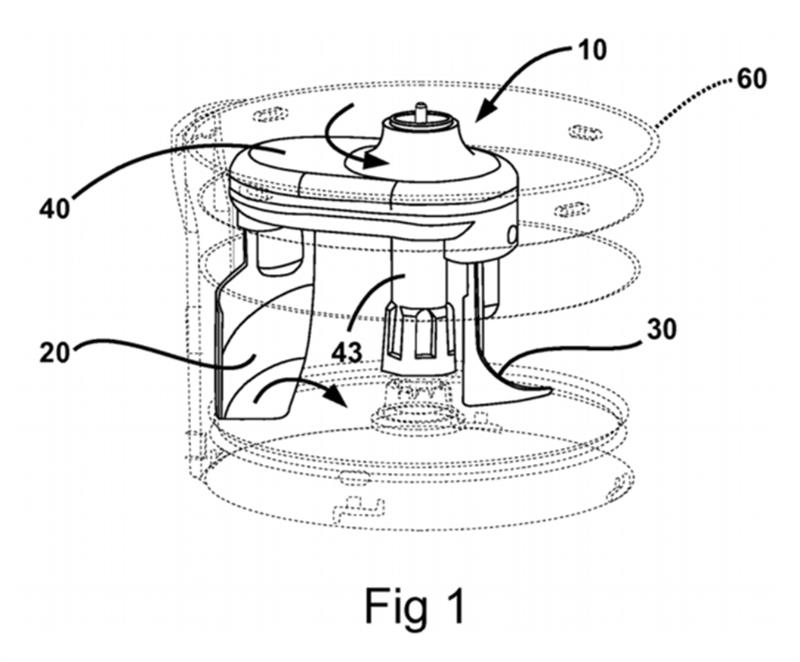For those unfamiliar with the term, ‘folding’ describes the technique by which ingredients are gently combined such that the amount of air lost from the mixture is kept to a minimum. This technique is often used when ingredients have been previously whisked, or otherwise aerated, and wherever there is a need to retain as much of this air in the mix as possible.
‘Folding’ is traditionally achieved manually using a spoon or spatula. However, for those inexperienced in the technique, the resulting mixture can become over worked, or insufficiently combined, both of which result in inferior bakes.
Recently granted to Kenwood Limited, which is part of the De'Longhi Group, patents GB 2498342 and GB 2502811 feature an innovative food processor attachment, which is designed to solve this problem. The attachment simplifies the folding process and allows even inexperienced bakers to achieve acceptable results time after time.
 Firstly, looking at GB 2498342, Figure 1 shows the food processor attachment (10) designed for use with a food processor having a mixing bowl (60), which is shown in dotted outline. The processor attachment has a pair of ‘paddle-like blades’ (20, 30) extending down from an upper casing (40). These blades rotate in an anti-clockwise direction, revolving around the bowl.
Firstly, looking at GB 2498342, Figure 1 shows the food processor attachment (10) designed for use with a food processor having a mixing bowl (60), which is shown in dotted outline. The processor attachment has a pair of ‘paddle-like blades’ (20, 30) extending down from an upper casing (40). These blades rotate in an anti-clockwise direction, revolving around the bowl.
The blades are shaped and positioned to simulate the ‘folding’ technique.One of the blades (20) is positioned close to the wall of the mixing bowl and is curved inwards to move the ingredients towards the centre of the bowl. The second blade is positioned close to the centre of the bowl and is curved outwards to move ingredients towards the outer part of the bowl. In this way the folding action is achieved.
Since the original concept, Kenwood has developed the invention further.The second patent, GB 2502811, seeks to protect an improvement in which one or both of the blades can rotate on their own axis, as the blades revolve around the mixing bowl. Obtaining patent protection for this refinement, as well as for the original concept, has given Kenwood an additional layer of patent protection, strengthening its 20-year period of commercial exclusivity.
This serves as a useful reminder that it is not just the big, ground-breaking concepts that are worthy of patent protection, but smaller, incremental improvements can also be patented. By taking advantage of this approach, multi-layered patent protection can be achieved, ring-fencing your product and providing further obstacles to any competitors that might be seeking to copy it.











